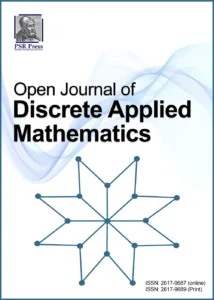The Open Journal of Discrete Applied Mathematics (ODAM) (2617-9687 Online, 2617-9679 Print) is an international peer-reviewed journal dedicated to publishing research in algorithmic and applied mathematics, as well as the applications of mathematics across science and technology. Contributions may include research articles, short notes, surveys, and research problems, providing a comprehensive platform for advancing knowledge in discrete and applied mathematics.
- Open Access: ODAM follows the Diamond Open Access model—completely free for both authors and readers, with no APCs. Articles are made freely available online without financial, legal, or technical barriers.
- Visibility: Accepted articles are published online immediately upon acceptance, ensuring broad accessibility. A printed version is released annually in December.
- Rapid Publication: Editorial decisions are provided within 4 to 12 weeks of manuscript submission, with accepted articles published online promptly.
- Scope: Focuses on research papers in algorithmic and applied mathematics, as well as applications of mathematics in science and technology. Includes research papers, short notes, surveys, and research problems.
- Publication Frequency: One volume with three issues per year (April, August, December), with a printed version released in December.
- Indexing: ROAD, Mathematical Reviews (MathSciNet), WorldCat, Scilit, Google Scholar
- Publisher: Ptolemy Scientific Research Press (PSR Press), part of the Ptolemy Institute of Scientific Research and Technology.

